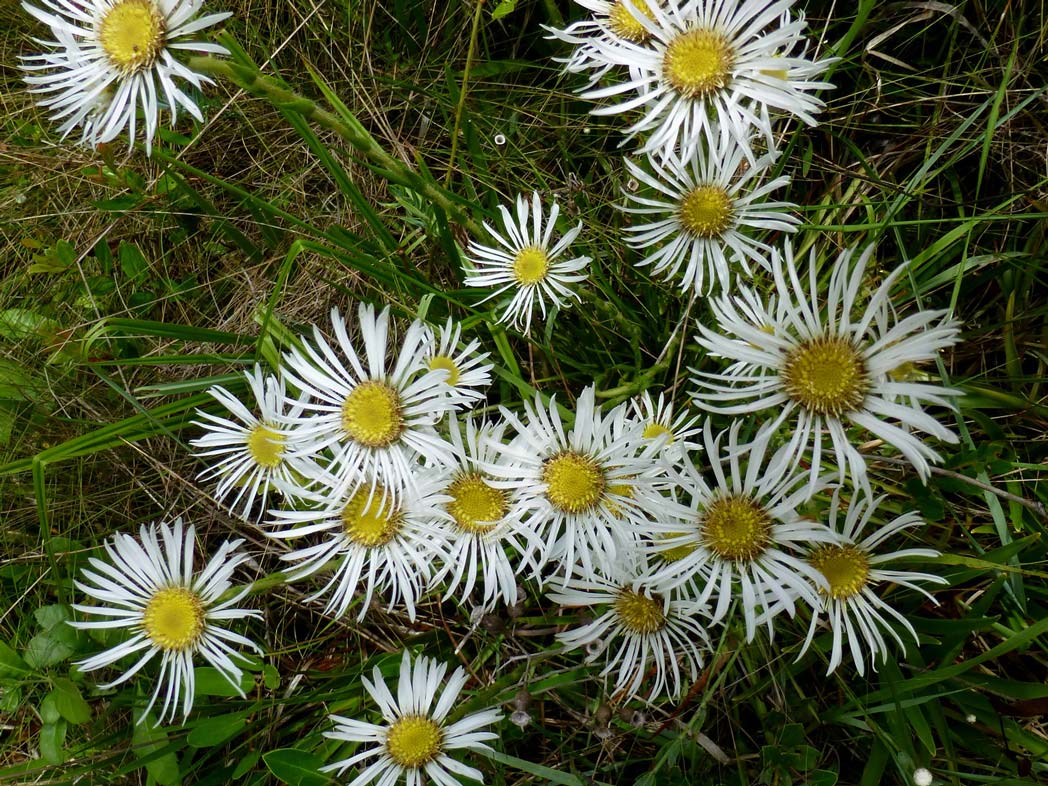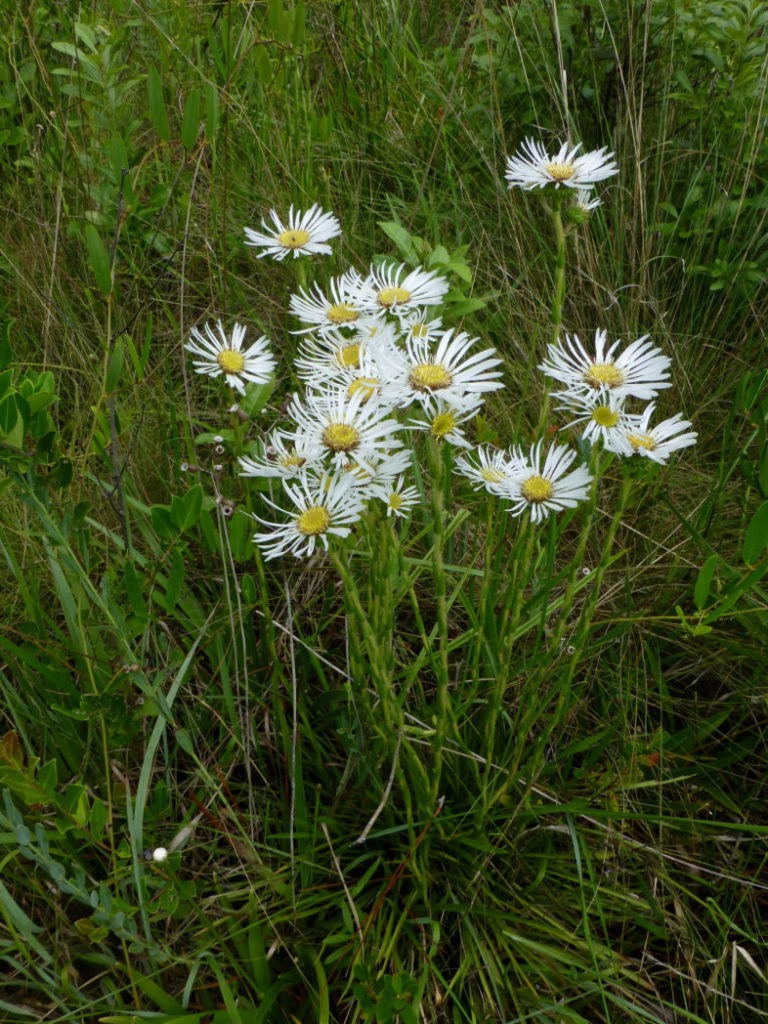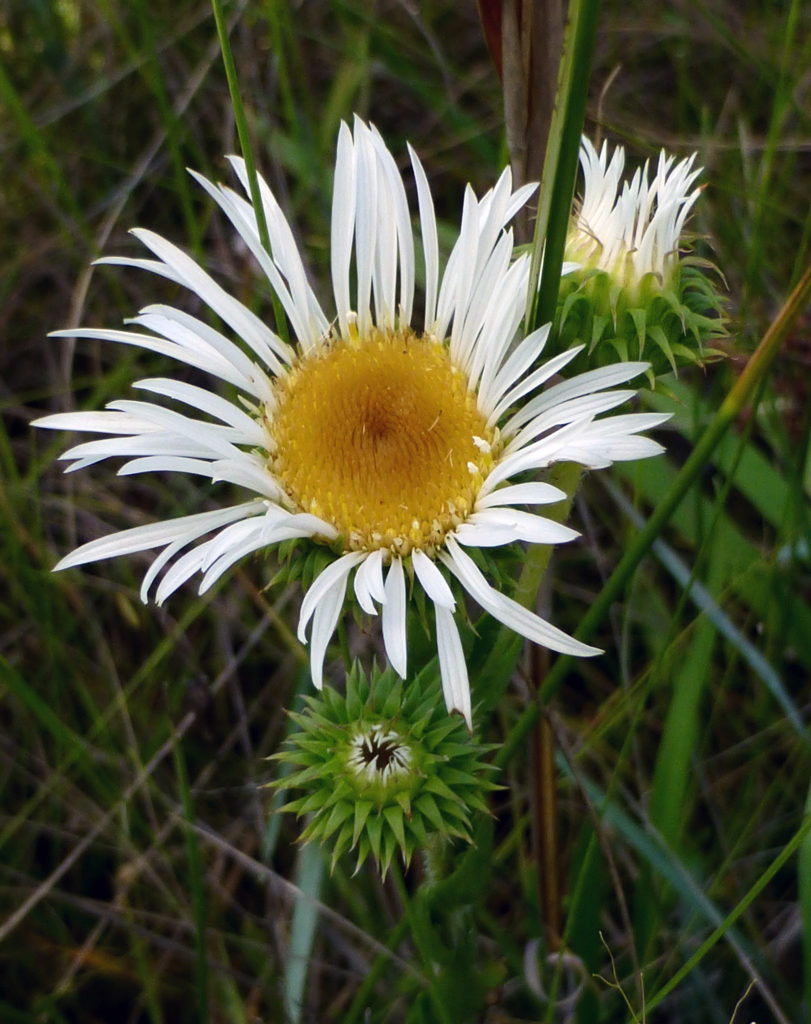Thistleleaf aster
Pictured above: Thistleleaf aster (Eurybia eryngiifolia) by Eleanor Dietrich. Click on terms for botanical definitions. View post as a PDF.
Thistleleaf aster (Eurybia eryngiifolia) is an herbaceous perennial wildflower that occurs only in Florida’s eastern Panhandle and in a few neighboring counties in Alabama and Georgia. Its blooms are fairly large. The center disk florets are dull and yellow to reddish. They are surrounded by spidery white to pinkish ray florets. The flower buds are hard and prickly. Stems are rigid and somewhat hairy. Basal leaves occur in a whorled rosette; they are linear to grasslike and slightly spiny. Upper leaves are reduced, sessile and alternately arranged.
Thistleleaf aster blooms in late spring through fall. It occurs naturally in wet prairies, wiregrass savannas and wet pine flatwoods. It is loved by many bees and butterflies.
The genus name Eurybia comes from the eurys, meaning “wide,” and baios, meaning “few.” This may refer to the ray florets, which are relatively wide and few as compared to other asters. The species name, eryngiifolia, translates loosely as “prickly leaves,” to which the common name “thistleleaf” also refers.
Family: Asteraceae (Aster or Composite family)
Native range: Eastern Panhandle
To see where natural populations of thistleleaf aster have been vouchered, visit florida.plantatlas.usf.edu.
Hardiness: Zones 8A–8B
Soil: Moist, rich soils (seasonally variable)
Exposure: Full sun to minimal shade
Growth habit: up to 3’ tall
Propagation: Seeds
Thistleleaf aster plants are occasionally available at nurseries that specialize in native plants. Visit PlantRealFlorida.org to find a native nursery on your area.



